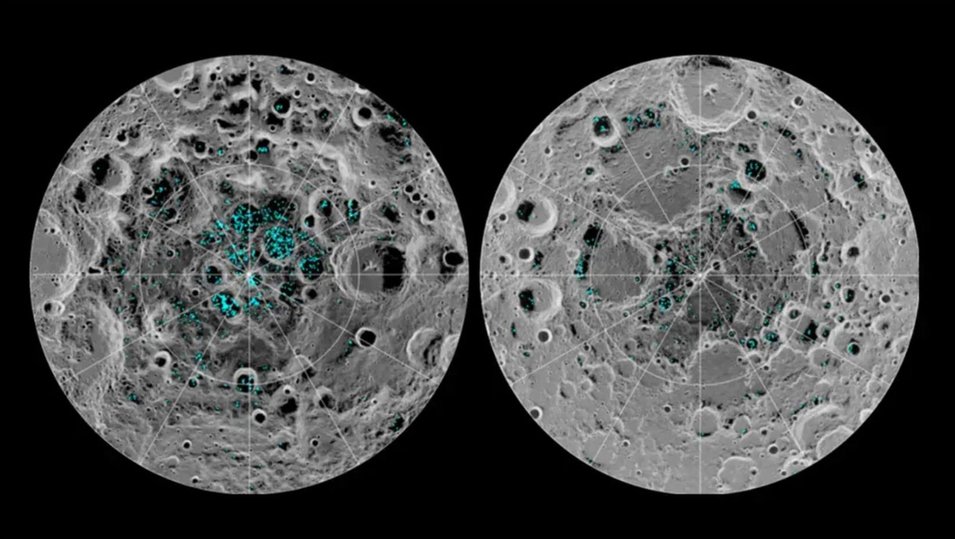Academician Zeleny spoke about the launch of two identical devices to different poles of the Moon
[ad_1]
The next Russian mission to land on the Moon may consist of two devices – Luna-27a and Luna-27b, which our scientists want to place at different poles of our natural satellite. The scientific director of the Space Research Institute of the Russian Academy of Sciences, Academician of the Russian Academy of Sciences Lev Zeleny, told MK about this, as well as other promising “lunar” plans on the eve of Cosmonautics Day.
Unfortunately, last year the Russian lunar program got off to a bad start: we lost the Luna 25 lander, which crashed on the surface of the satellite as a result of a programming error. To date, scientists have already worked out all the mistakes and are now preparing to continue the lunar exploration program.
So, the next step for the researchers will be the Luna 26 mission, which is planned for 2027. This will be an orbiter that will perform complete remote sensing of the lunar surface and also explore the cislunar space.
Next, in 2028, Luna-27 will launch, which, according to Lev Matveevich, may consist of two identical devices that will cover the North and South lunar poles.
“In Soviet times, all devices were made in duplicate for safety reasons,” says Lev Matveevich. – They were launched at some intervals in time. This increased reliability, and the price did not increase, since the devices were exactly the same. Taking into account the experience we gained with Luna-25, realizing that landing on an earthly satellite is quite difficult, we made a proposal to make two absolutely identical devices and send this tandem to different lunar poles.
– But the excitement right now is around the South Pole, what could be interesting about the North Pole?
– The excitement around the South Pole began after employees of the Space Research Institute of the Russian Academy of Sciences back in 2010 provided evidence that there may be more water ice at the South Pole of the Moon. The data was obtained by the Russian LEND instrument on the American LRO (Lunar Reconaissance Orbiter) apparatus. And now both India and the USA have landed at the South Pole, even Türkiye is going there! And the Northern one is no worse than the Southern one. Yes, there are fewer “wet” areas there, but we are only interested in one thing: where we will sit down and continue to settle. At the same time, we are not going to abandon the South Pole – it will be very interesting and important to compare different conditions and measurement results in the two polar regions.
– What could be the time interval between launches?
– Approximately 7-8 months, it depends on convenient astronomical launch windows. We will send the first one to the South Pole in 2028, we will see how it flies, how it lands, and how it functions. If something goes wrong, we will make the necessary corrections in the second one and send it next in 2029.
– Will the periods of their active phase intersect in time?
– Most likely they will intersect, but this will not particularly affect anything, since the measurements will still be carried out by the devices independently of each other.
After analyzing the unsuccessful landing of Luna-25, experts came to the conclusion that a longer flight path would be safer (for Luna-25 it was about 5 days). New landing algorithms will also be developed that will make it possible to carefully land Luna 27 in a given area.
As for the further program, Luna-28 will have to bring soil from the Moon. This, according to Lev Zeleny, will not be a standard return of soil, which has long been worked out by domestic scientists, but a cryogenic one, that is, the delivery of regolith to Earth will be carried out in frozen form. This, according to scientists, will make it possible to preserve in the ground water ice and other organic volatile substances that were “delivered” to the polar regions of the Moon by comets.

The further program will begin in 2030; by the mid-30s, Russian scientists intend to build and begin operating a space observatory on the Moon. Even further in the plans, they consider our natural satellite as an intermediate port before flights to other planets of the Solar System, from which it will be much easier to launch than from Earth due to lower gravity.
Joint plans with China.
At a recent press conference, the director of the Institute of Space Research of the Russian Academy of Sciences, Anatoly Petrukovich, announced agreements concluded with the People’s Republic of China on cooperation in the exploration of the Moon. In particular, there is a coordination agreement between the Chang’e-7 station (planned to launch in 2026) and Luna-26, under which the parties will exchange scientific data and instruments.
A joint lunar orbital station with the Chinese may appear after 2030. It is currently at the research stage. However, as well as a joint project to deliver a nuclear reactor to the Moon for the uninterrupted supply of energy to the lunar base at night. On lunar nights, which last for two weeks at a time with temperatures that drop to -100 degrees Celsius, such a source will make it possible to expand the research program more widely and make it long-term.
According to Lev Zeleny, there are also the first concrete steps in the framework of joint activities with the Chinese:
– In 2023, we exchanged soil samples with them. Representatives of the People’s Republic of China provided us with lunar soil delivered by the Chang’e-5 spacecraft from the youngest area of the Moon, and we provided them with our first samples delivered by Luna-16 from the most ancient area of the satellite (its age was once determined from it – 4.5 billion years). Work is currently underway to study this material.
[ad_2]
Source link








